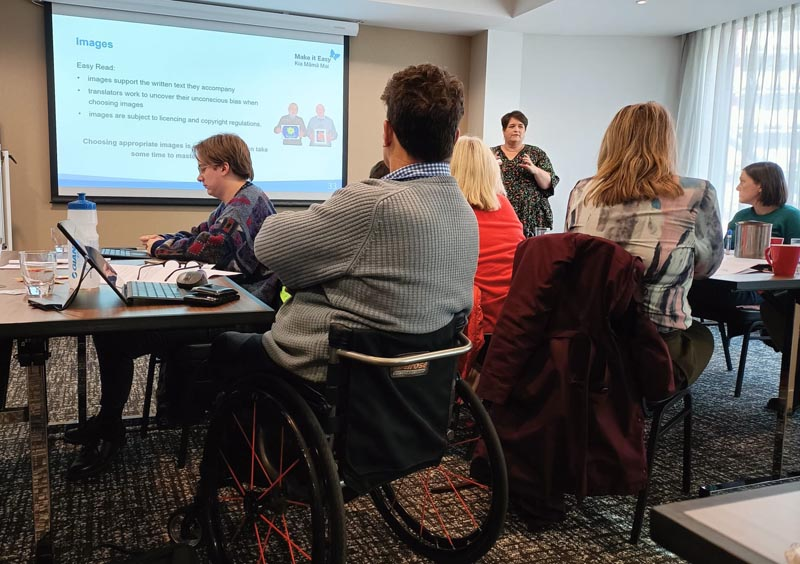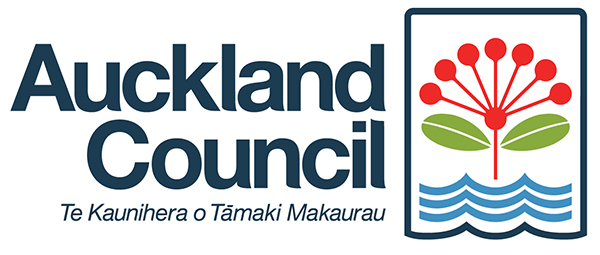Making information accessible is the focus of Kathryn Parrish, Manager of the Make it Easy translation service delivered through People First NZ.
 Kathryn has worked for People First NZ since 2018 and became the Manager of Make It Easy in 2020 at the height of the COVID-19 pandemic. Her role is to liaise with organisations who need information translated into Easy Read and manage a small team of Easy Read translators, who are spread out across the country.
Kathryn has worked for People First NZ since 2018 and became the Manager of Make It Easy in 2020 at the height of the COVID-19 pandemic. Her role is to liaise with organisations who need information translated into Easy Read and manage a small team of Easy Read translators, who are spread out across the country.
"I'm really lucky to have a team of translators who are passionate about Easy Read and accessibility,” she says.
Accessibility for Kathryn is about equity, a view that comes from her personal experience of the daily barriers she faces as a Deaf person. She is a bilateral cochlear implant wearer and has had cochlear implants for six years.
"My world got quite restricted, particularly prior to having cochlear implants,” she says. “Being able to access information at the same time as everyone else lets people participate, make choices and have their say on their own terms.”
Making written information accessible to many communities
Easy Read makes written information accessible to many communities, including people with learning disability; people for whom English is a second language; people with literacy needs; members of the seniors community, and for the d/Deaf community.
Easy Read translations take hard concepts and technical language, breaking down important information in a way that makes the information concise but easy to understand.
"That's the value of Easy Read for people,” Kathryn says. “It's able to break down some of those conceptual assumptions that people make and provide examples and visuals."
Increase in demand for Easy Read
During COVID-19, there was a huge increase in demand for Easy Read translations when the need for accurate, accessible information was particularly important. The service grew rapidly.
"When you pick up an Easy Read document and you think 'oh this looks easy', that's because we have done a really good job of it. There are lots of layers to Easy Read that are not necessarily obvious.
"This means it can take time to do Easy Read translations. Managing the demand during the height of COVID was a real challenge."
Training workshops for people and organisations to try their hands
Make it Easy is rolling out training workshops so people and organisations can try their hands at making their own translations and familiarise themselves with the Easy Read translation process.
 “We’ve been rolling out this Easy Read training so we can support organisations to create their own Easy Read documents, and to come back and work collaboratively with us for advice and to accreditation of their Easy Read document.”
“We’ve been rolling out this Easy Read training so we can support organisations to create their own Easy Read documents, and to come back and work collaboratively with us for advice and to accreditation of their Easy Read document.”
Kathryn is also working with organisations beyond the disability sector to educate them about the value of Easy Read. She hopes Easy Read will be more and more available to the public where information must be conveyed.
Although demand can be hard to manage, Kathryn is happy when she sees Easy Read being used in public spaces and people getting to know more about it. She also loves getting feedback, and hearing people understanding and advocating for Easy Read.
"I always love it when Easy Read can be found at the local library or the local doctors,” she says. “These are places where we want to see Easy Read being readily available."
Kathryn and her team at Make it Easy hope to continue addressing the barriers in understanding information.
"It might seem really simple but I think having an equal opportunity to participate, and having that choice and control over our own lives is a human right."
People can find more information about Easy Read and the Make it Easy service on www.makeiteasy.org.nz. The People First NZ website also hosts the Easy Read library. In cases of emergencies, the National Emergency Management Agency also has a wide range of information in Easy Read.



